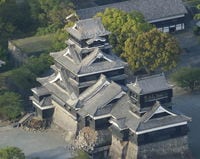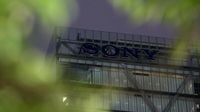A powerful 7.3 magnitude earthquake struck southern Japan early on Saturday (April16), killing at least 16 more people, injuring more than 1,000 and trapping people in collapsed buildings, barely a day after a quake killed nine people in the same region.
The epicenter of the quake was near the city of Kumamoto on the southern island of Kyushu and measured at a shallow depth of 10 kms (6 miles), the USGS said. The same area was hit by another tremor on Thursday, killing nine.
Video cameras recorded the moment the quake struck in the empty newsroom of RKK broadcaster, as well as Kumamoto airport.
Rescuers dug through the rubble of collapsed buildings and mud and debris to try and reach those trapped, but continued aftershocks hindered rescue efforts and fueled fears of more powerful quakes.
In some place locals gathered around to help with the rescue operations, but in other places profession rescue teams with chainsaws had to be brought in.
Television footage of the area showed buildings collapsed on cars, power outages, collapsed bridges and gaping holes in the earth.
Rescuers tried to free people trapped in a university dormitory in Minami Aso village, where a nearby landslide also occurred, blocking a major road.
Local media reported the region's transport network also suffered considerable damage with derailed trains, broken roads, one tunnel caved in and a highway bridge damaged. Kumamoto airport was also closed.
Residents near a dam were told to leave because of fears it might crumble, broadcaster NHK said, while the 400-year-old Kumamoto Castle in the center of the city was badly damaged.
The quake breached the castle's walls, which had previously withstood bombardment and fire in its four centuries of existence.
The fortification in the city of Kumamoto has stood as one of Kyushu's icons ever since it was built in 1607 by Kiyomasa Kato. He was a veteran military campaigner and feudal lord who took part in the reunification of Japan, which had been ravaged by a century of war.
Local television footage showed a large section of the stone wall housing the castle collapsed in a dusty heap.
While the castle keep, which has so far withstood the series of quakes, is a concrete reconstruction built in 1960, many of the stone walls are originals from the 17th century. Sections of the outer stone walls had already been damaged by Thursday's earthquake.
Japan is on the seismically active "ring of fire" around the Pacific Ocean and has building codes aimed at helping structures withstand earthquakes.
A magnitude 9 quake in March 2011 north of Tokyo touched off a massive tsunami and nuclear meltdowns at Fukushima. Nearly 20,000 people were killed in the tsunami.



